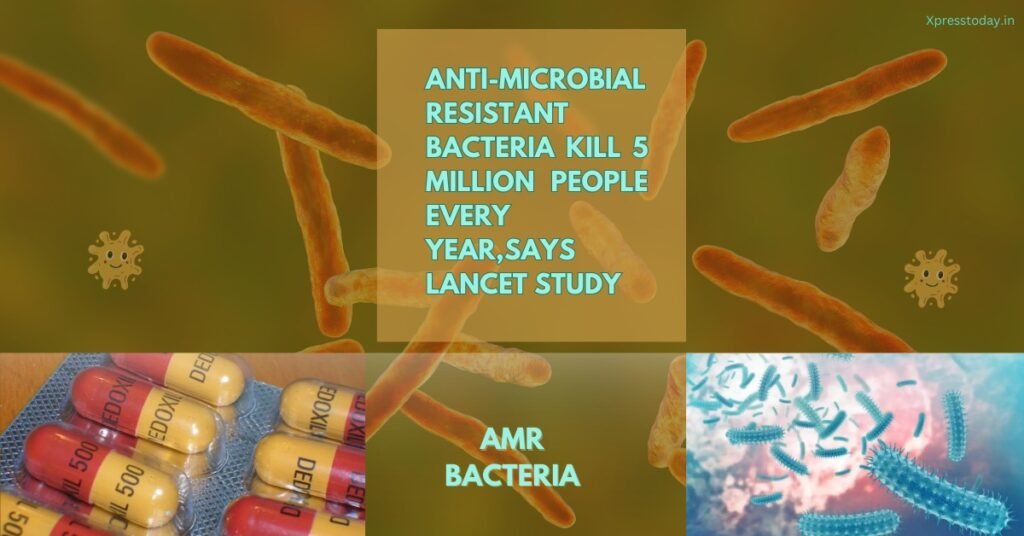
Overview:
What is Anti-Microbial Resistance?
Anti-microbial resistance (AMR) occurs when microorganisms such as bacteria, viruses, fungi, and parasites evolve mechanisms to resist the effects of medications that once effectively treated them.
This resistance renders standard treatments ineffective, leading to persistent infections, increased transmission, and higher mortality rates. AMR is a natural phenomenon accelerated by human actions, posing a significant threat to global health, food security, and development.
Reasons for Anti-Microbial Resistance
- Overuse and Misuse of Antibiotics:
• Human Medicine: The inappropriate prescription of antibiotics for viral infections, like the common cold, and the excessive use of broad-spectrum antibiotics contribute to resistance.
• Patients often demand antibiotics, and physicians may yield to pressure even when not medically justified.
• Agriculture: The widespread use of antibiotics in livestock for growth promotion and disease prevention contributes significantly to AMR.
• Antibiotics are often administered to healthy animals, creating a breeding ground for resistant bacteria that can transfer to humans through food consumption. - Poor Infection Prevention and Control:
• Healthcare Settings: Inadequate infection control practices in hospitals and clinics, including poor hand hygiene and sterilization protocols, can lead to the spread of resistant bacteria.
• Community Settings: Lack of public health infrastructure and sanitation in many parts of the world contributes to the spread of infections and the emergence of resistance. - Lack of New Antibiotics:
• The pharmaceutical industry faces significant challenges in developing new antibiotics due to scientific, regulatory, and economic barriers.
• The process is costly and time-consuming, with a limited return on investment compared to drugs for chronic diseases, leading to a stagnant pipeline of new antimicrobial agents. - Global Travel and Trade:
• The interconnectedness of the world through travel and trade facilitates the rapid spread of resistant bacteria across borders.
• Infections resistant to treatment in one region can quickly become a global issue. - Environmental Factors:
• Environmental contamination with antibiotics from pharmaceutical manufacturing, agricultural runoff, and improper disposal of medical waste contributes to the presence of antibiotics in the environment, fostering resistance in natural microbial communities.
Confronting Anti-Microbial Resistance Effectively
- Strengthening Surveillance Systems:
• Monitoring and Data Collection: Establish robust global and national surveillance systems to monitor AMR trends.
• Data on resistance patterns can inform targeted interventions and policy decisions.
• International Collaboration: Enhance cooperation among countries to share data and resources, enabling a coordinated global response to AMR. - Optimizing Antibiotic Use:
• Antimicrobial Stewardship Programs (ASPs): Implement ASPs in healthcare settings to promote the appropriate use of antibiotics.
• These programs involve guidelines for prescribing antibiotics, education for healthcare providers, and monitoring of antibiotic use and resistance.
• Public Awareness Campaigns: Educate the public on the dangers of antibiotic misuse and the importance of following prescribed treatments.
• Campaigns can reduce the demand for unnecessary antibiotics and promote adherence to prescribed regimens. - Infection Prevention and Control (IPC):
• Healthcare Practices: Strengthen IPC measures in hospitals and clinics, including strict hand hygiene, sterilization protocols, and isolation procedures for patients with resistant infections.
• Vaccination Programs: Promote vaccination to reduce the incidence of infections, thereby decreasing the need for antibiotics and the opportunity for resistance to develop. - Research and Development (R&D):
• New Antibiotics: Encourage investment in R&D for new antibiotics through incentives such as public-private partnerships, grants, and streamlined regulatory processes.
• Governments and international organizations can play a crucial role in supporting research initiatives.
• Alternative Therapies: Explore and develop alternative treatments to antibiotics, such as phage therapy, immunotherapies, and probiotics, to provide additional tools for combating infections. - Environmental Measures:
• Regulation of Antibiotic Use in Agriculture: Implement regulations to limit the use of antibiotics in livestock and promote alternative practices for disease prevention, such as improved animal husbandry and vaccination.
• Environmental Management: Address environmental contamination by regulating the discharge of antibiotics from pharmaceutical factories and improving waste management practices to reduce the spread of resistant bacteria in the environment. - Strengthening Global Governance and Policy:
• International Agreements: Foster international agreements and frameworks to combat AMR, such as the World Health Organization’s (WHO) Global Action Plan on AMR.
• These frameworks should encourage coordinated efforts and resource sharing among nations.
• National Action Plans: Develop and implement national action plans tailored to the specific needs and challenges of each country, aligning with global strategies to address AMR comprehensively.
Conclusion
Anti-microbial resistance is a complex and multifaceted challenge that requires a coordinated global response. Understanding the underlying causes of AMR, including the overuse and misuse of antibiotics, poor infection control practices, lack of new antibiotics, global travel and trade, and environmental factors, is crucial for developing effective strategies to combat it.
By strengthening surveillance systems, optimizing antibiotic use, enhancing infection prevention and control, investing in research and development, implementing environmental measures, and fostering strong global governance, we can confront AMR effectively and safeguard the health of future generations.





